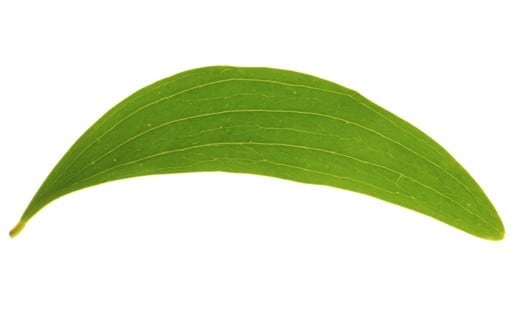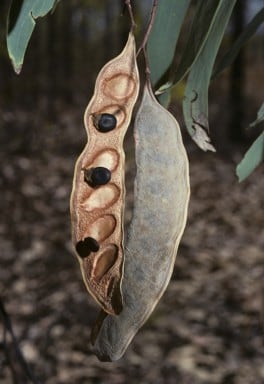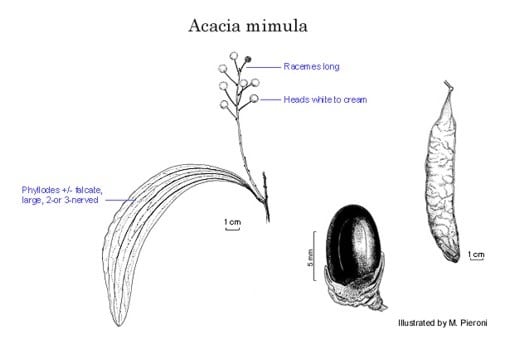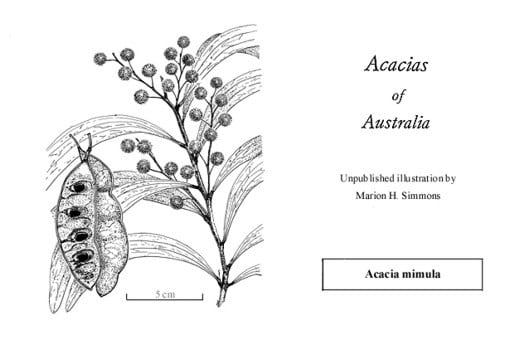Acacia mimula Pedley
WATTLE
Acacias of Australia
Family
Fabaceae
Distribution
Occurs in north-western N.T., from near Darwin SE to near Katherine.
Description
Shrub or tree 2–7 m high, often suckering following fire. Bark dark grey to black, fissured. Branchlets angular at extremities, glabrous. Phyllodes narrowly elliptic to oblanceolate, shallowly to ±strongly falcate, (7–) 8–20 cm long, (7–) 10–28 (–35) mm wide, obtuse, glabrous, with 2 or 3 prominent longitudinal nerves (the third on broad phyllodes and not extending to apex) of which only lowermost reaching apex; secondary nerves anastomosing in open reticulum; gland basal, with 1 or 2 additional glands on upper margin. Inflorescences in axillary racemes or terminal panicles; raceme axes 6.5–15 cm long, glabrous; peduncles 5–20 mm long; heads globular, 5–6 mm diam., 40–62-flowered, white to cream or yellow. Flowers 5‑merous; sepals 1/2–2/3-united. Pods flat, 13 cm long, 2–2.8 cm wide, thickly coriaceous to woody, openly reticulately nerved, glabrous. Seeds transverse, oblong-elliptic, 9–10 mm long, slightly shiny, dark brown; funicle fleshy and folded beneath aril.
Phenology
Flowers April–June.
Habitat
Grows in sandy and gravelly soil in open forest and woodland.
Specimens
N.T.: Munmarlary, C.Dunlop 4268 (PERTH); c. 3 km E of Umbrawarra Gorge, C.Dunlop 4556 (CANB, PERTH); Mary R. Ranger Station, S boundary of Kakadu Natl Park, B.R.Maslin 7361 et al. (DNA, PERTH).
Notes
Closely related to A. rothii. Also related to A. latescens which has consistently two main longitudinal nerves in the phyllodes, short axillary racemes and narrower pods with seeds longitudinal to oblique.
FOA Reference
Data derived from Flora of Australia Volumes 11A (2001), 11B (2001) and 12 (1998), products of ABRS, ©Commonwealth of Australia
Author
R.S.Cowan, B.R.Maslin
Minor edits by B.R.Maslin & J.Rogers
This identification key and fact sheets are available as a mobile application:
URL: https://apps.lucidcentral.org/wattle/
© Copyright 2018. All rights reserved.











